Yes, the United States and Russia should get back to the negotiating table, writes Strobe Talbott. But not under the auspices of the G-7. This piece originally appeared in Politico.
Before President Donald Trump embarked to meet his fellow Group of Seven leaders in Canada last Friday, he presaged that he was going to play the spoiler at the summit and, potentially, wreck the G-7 itself. In a brief but pugnacious press conference, he objected to Vladimir Putin’s ouster from the group of top democracies in 2014 in the wake of Russia’s annexation of Crimea and occupation of Eastern Ukraine.
Putin should be allowed back, Trump argued, “because we should have Russia at the negotiating table. You know, whether you like it or not, and it may not be politically correct, but we have a world to run.”
Yes, the U.S. and Russia should get back to the negotiating table, squared off on either side and hammering out agreements to stem a burgeoning arms race and other serious and dangerous issues. But not under the auspices of the G-7. That gathering is meant to solidify policies on the basis of shared values and interests. If Putin were there, he would not be in a cooperative. Quite the contrary, he would render the group ineffective.
And yes, “we have a world to run,” but the set of nations and leaders for that first-person plural pronoun that Trump has in mind is not the G-7, given his hostility to America’s allies and affinity to dictators and populist ultranationalists. An ominous portent was Trump’s refusal to endorse the summit communique and his acidic tweets aimed Prime Minister Justin Trudeau (the charge: “false statements”)
Russia’s eviction four years ago was not a matter of political correctness. Rather, it was—and still is—an ideological and geopolitical imperative, consistent with the reason that Russia was elevated to the G-8 21 years ago.
That was a different Russia in a different world and, sadly, one led by a different United States.
The origin of a G8 goes back to the Reagan administration in the 1980s. Mikhail Gorbachev was ending the Cold War and trying to convert the Soviet Union to a normal, modern state that would integrate into global economy and a rule-based international order. He hoped that the major democratic states would bring him into their fold, at least as an associate member.
The seven members of the G-7—Britain, Canada, France, Germany, Italy, Japan and the United States—supported the Gorbachev reforms: perestroika (reconstruction of the economy), glasnost (free speech and muzzling the Big Lie), lifting repression of Soviet citizens and Moscow’s domination of Eastern Europe.
Welcome as this was, a defining criterion for admission was a democratic government, and Gorbachev’s USSR was still a Communist state, ruled from the top down.
That changed in 1992 with the dissolution of the Soviet Union and Russia’s first democratically elected leader, Boris Yeltsin. Soon after moving into the Kremlin, he pounded on the door of the G-7 with appeals for Russia to be let in as a full member. He kept it up for five years.
A number of G-7 members were reluctant because of the political turmoil that came with the collapse of a totalitarian regime and the impediments to jump-starting a capitalist economy.
President Bill Clinton, however, believed that Russian membership would be an incentive to Yeltsin to stay on course. In 1997, the G-7 convened for its annual meeting in Denver. As host, Clinton was able to push through a decision to induct Russia as a full member the following year at a summit in Britain.
Preparing for the Denver meeting, he told his staff, “Getting Russia itself into the club of leading democracies is a high-class problem, especially when you compare it to what we’d be dealing with if Russia had really gone bad and if Russia was really our enemy.”
So here we are, 21 years later, and Russia has gone really bad, and it really is our enemy. On the ideological front, Putin has reversed Gorbachev’s and Yeltsin’s reforms. Russia is a pseudo-democracy and de facto autocracy under one-man rule. Putin has more power than any Kremlin leader since Stalin. He is alone at the top of the “vertical of power.”
Moreover, the Big Lie and the Mail Fist are back, domestically and abroad. Putin’s 2008 grab of two regions in Georgia and his 2014 conquest in Ukraine were the first instances of Moscow committing aggression in Europe since the Red Army replaced the Wehrmacht at the end of World War II in the name of “liberation,” creating the Warsaw Pact.
Then there is Putin’s new cold war with the West. A menacing trend, clearly authorized by the Kremlin, has been a rash of assassinations (“wet affairs”) on foreign soil, including what U.S. intelligence officials believe was the murder of a former Putin protégé in Washington, D.C., several blocks from the White House on the eve of an appointment with U.S. law enforcement agents.
The main battlefield is cyberspace, and the weapons are manipulation of social media, publicizing private emails, and new means to falsify electoral outcomes by hacking voting machines. The KGB, Putin’s professional alma mater, had some triumphs against the USSR’s enemies in Cold War I, such as stealing secrets from the Manhattan Project. But sophisticated enterprises like Fancy Bear and Cozy Bear have already scored incredible victories, perhaps putting Trump in the Oval Office.
Nearly a year and a half into his tenure, the president remains under suspicion that Russian entities cozied up to his campaign—and vice versa. That darkening cloud itself weakens him and the country he leads, but not as much as his upending of seven decades of American priorities, strategies and partners.
Trump told the press last week, with apparent pride, that he is “Russia’s worst nightmare.” Wrong. He is the democratic world’s worst nightmare. He has crippled NATO, the North Atlantic community, the European Union and now the G-7. In Putin’s zero-sum worldview, that is a dream come true.
The Brookings Institution is committed to quality, independence, and impact.
We are supported by a diverse array of funders. In line with our values and policies, each Brookings publication represents the sole views of its author(s).

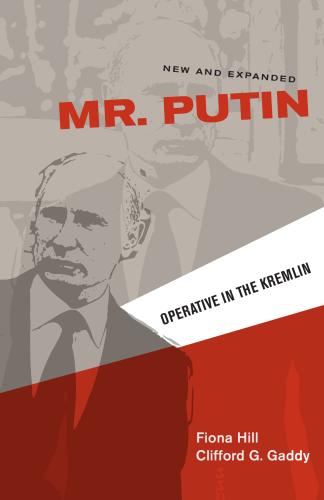
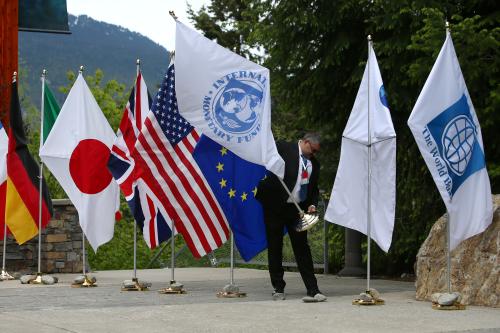
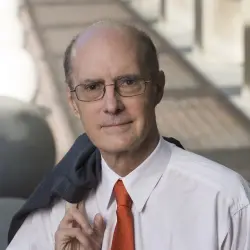

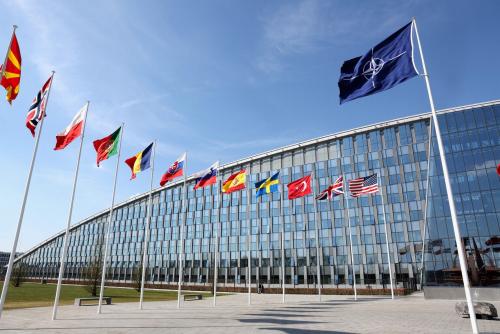
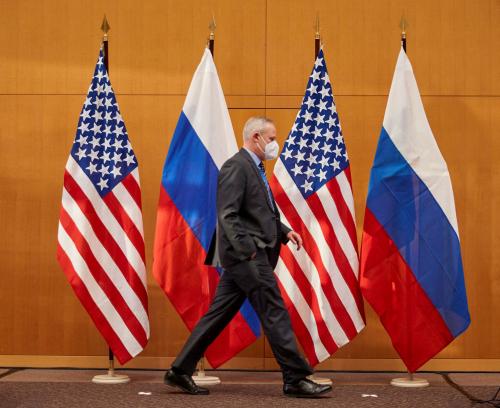
Commentary
Trump just blew up the G-7. Now what?
June 11, 2018